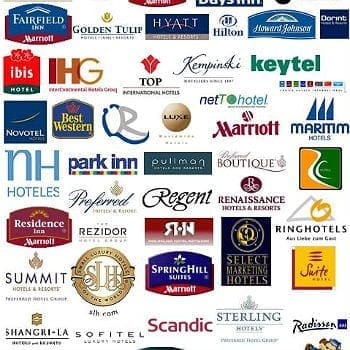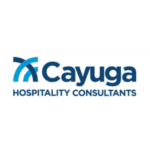It seems that you cannot read an industry periodical without perusing an article about another brand being launched within the hotel industry. Off the top of my head: Centric, OE Collection, Ritz Reserve, Canopy – need I go on? Meanwhile, there are the acquisitions: Kimpton has been sold to IHG, Starwood making moves in the luxury collection business with Design Hotels and Delta (my fellow Canadian brand) has become part of Marriott.
Why is all this happening now, and what does this foretell of our industry? Here is my take on this cavalcade of marketplace shuffles and shifts.
Let’s look at this from a purely economic sense with, of course, a healthy dose of financial and marketing considerations. From basic business theory, we know that there are economies of scale that can be attributed to larger entities. In our industry the more rooms in the fold, the easier it is to spread corporate overhead costs. That’s pretty straightforward.
To a certain extent, the same rationale applies to product awareness: the more properties you have, the easier it is for customers to recognize the brand and its attributes. As well, the more properties you have, the greater the strength of your loyalty program (at least for those looking to visit more than one city or region in their lifetimes).
This has always been the struggle facing the independents: how does a relatively unknown property fare when compared to the branding power of the chain down the block? This lack of familiarity was the impetus to create associations such as Preferred and Leading Hotels, whose relationships and seal of quality have provided a steady stream of customers coming to the independent members’ doors. It’s also been a driving force behind the more recent trend towards independent hotel networks within a larger portfolio such as Starwood’s Luxury Collection and Marriot’s Autograph Collection.
This ‘networking power’ that the major brands have seems, on the surface, to be at odds with their current actions. That is, why would a recognized name in the industry branch out and create new (and potentially cannibalizing) progeny with dissociated names? My thoughts and hypotheses, for discussion:
- Their own brand names are tarnished or have suffered irreparable harm through years of failing to properly support each and every brand constituent. Asked somewhat naively: What does Hilton, Sheraton or Westin mean to a customer? Maybe those great brand names are cast too closely to an old-world business model that is just too hard or entrenched to refresh.
- Many think it is easier to create a new brand than to invest in regenerating interest in an established brand. I don’t necessarily agree with this. Think of the car industry and its numerous examples of brands or series models (Volkswagen and the Chevrolet Camaro to name two) brought back from near death by making them relevant to today’s customers. Then again, we have yet to see anyone consider bringing back Ford’s Pinto or Maverick.
- A new brand means new rules for franchisees. Room standards change over time. Many of these changes require a capital investment. It’s often hard to move a brand standard ‘up’ and convince a franchisee to invest in this higher-level product. A new brand is not encumbered with these issues.
- New hotel brands provide a broader selection of products for the consumer under the same umbrella brand. For example, say you’re a Hilton loyalist and are impressed by their excellent HHonors reward program. By adding brands, the thought is that this hospitality behemoth will keep you in the family no matter what your travel motivations are or how your tastes will change over time.
- Hotels don’t spend much on advertising; so adding brands is a substitute way of getting creative. While this sounds absurd, additional products/brands add to the marketing department’s responsibilities and feather the CMO’s nest. New hotel openings, groundbreakings and brand announcements always make for a good media splash, filling the left-hand editorial content with something hospitality related while the right-hand page changes from a full-page branded hotel promotion to an ad for the latest mobile-based tech startup.
Whatever the reason, for my money, there has never been a better time to be an independent, especially in the premium tier. With every new brand launched, the clout of each individual brand diminishes. The human memory is only so big and the more brands you try and cram in there, the less space each individual name will occupy.
Your stand-alone property now competes with other (luxury) ‘almost-stand-alone’ properties being launched by the major hotel brands. With fractured support from headquarters, they need to fend more for themselves in their respective marketplaces than ever before. In the end, this gives the advantage to independents because they stand a better chance at developing emotional connections with guests (more genuine character, a more authentic experience, etc).
It remains to be seen if this ‘a brand for everyone’ strategy that pervades the major hotel networks will improve business or only lead to a further dilution of their already under-supported core businesses. I’m skeptical of its long-term success and, before you run off to split off another hotel concept or soft brand part of an existing portfolio, give some thought to what’s been addressed above.
What are your thoughts on the future of hotel brands? Let us know in the Comments section below!
About the author
Larry Mogelonsky (larry@lma.net) is the president and founder of LMA Communications Inc. (www.lma.ca), an award-winning, full service communications agency focused on the hospitality industry (est. 1991). Larry is also the developer of Inn at a Glance hospitality software. As a recognized expert in marketing services, his experience encompasses Four Seasons Hotels & Resorts and Preferred Hotels & Resorts, as well as numerous independent properties throughout North America, Europe and Asia. Larry is a registered professional engineer, and received his MBA from McMaster University. He’s also an associate of G7 Hospitality, a member of Cayuga Hospitality Advisors and Laguna Strategic Advisors. His work includes three books “Are You an Ostrich or a Llama?” (2012) and “Llamas Rule” (2013) and “Hotel Llama” (2014). You can reach Larry at larry@lma.ca to discuss any hospitality business challenges or to review speaking engagements.
This article may not be reproduced without the expressed permission of the author.



















